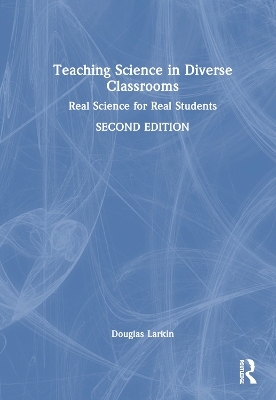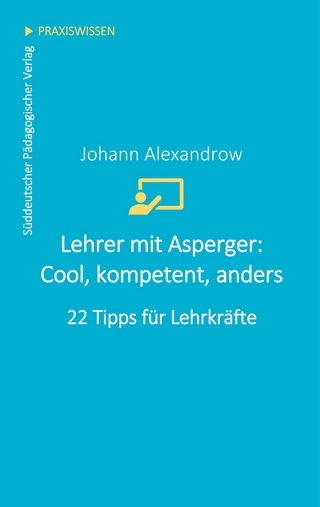
Teaching Science in Diverse Classrooms
Routledge (Verlag)
978-1-032-77784-9 (ISBN)
- Noch nicht erschienen (ca. Mai 2025)
- Versandkostenfrei
- Auch auf Rechnung
- Artikel merken
As a distinctive voice in science education writing, Douglas B. Larkin provides a fresh perspective for science teachers working to make real science accessible to all K-12 students. Through compelling anecdotes and vignettes, this book draws on research to present a vision of successful and inspiring science teaching that builds upon the prior knowledge, experiences, and interests of students. With empathy for the challenges faced by contemporary science teachers, Teaching Science in Diverse Classrooms encourages teachers to embrace the intellectual task of engaging their students in learning science and offers an abundance of examples of what high-quality science teaching for all students can look like. This updated and expanded second edition includes more attention to teaching and learning science in a world changed by the pandemic and reaffirms the importance of attending to equity and justice in science classrooms.
Divided into four sections, this book centers around the idea that the decisions made by good science teachers help light the way for their students along both familiar and unfamiliar pathways to understanding. The book addresses topics and issues that occur in the daily lives and career arcs of science teachers, such as:
Aiming for culturally relevant science teaching
Eliciting and working with students’ ideas
Reshaping school science with scientific practices
Viewing science teachers as science learners
Teaching science in turbulent times
Grounded in the Next Generation Science Standards (NGSS), this is a perfect resource for both pre-service and in-service teachers and teacher educators that addresses the intellectual challenges of teaching science in contemporary classrooms and models how to enact effective, reform-based science teaching practices for all students.
Douglas B. Larkin is Professor of Teaching and Learning at Montclair State University, USA. He has worked as a high school science teacher and educator in New Jersey, Wisconsin, Kenya, and Papua New Guinea. His research examines science teacher preparation and retention, as well as issues of equity and justice in teacher education.
Part 1: Student Ideas Are the Raw Material of Our Work 1. Aiming for Culturally Relevant Science Teaching 2. Eliciting Students’ Ideas 3. Every Misconception a Shiny Pebble 4. Responding to Student Questions Without Giving Answers Part 2: Real Science, Real Students 5. HeLa Cells, High-speed Chases, and Other Essential Questions 6. Reconsidering Labs and Demonstrations for Model-Based Inquiry 7. What if the Stork Carried 20-sided Dice? 8. Eyes Like a Scientist 9. In Praise of Field Trips and Guest Speakers 10. “Before Today I was Afraid of Trees” Part 3: Science Teacher Learning 11. Observing Candles and Classrooms 12. Mentoring New Science Teachers 13. The Black Belt Science Teacher 14. Teaching at the Boundaries of Our Knowledge 15. Playing School vs. Doing Science Part 4: Teaching Science in an Ever-Changing World 16. Notes from a Classroom Visit 17. The Toughest Year So Far 18. Can’t We Just Teach the Science? Afterword: Good Reasons for Becoming a Science Teacher
| Erscheint lt. Verlag | 1.5.2025 |
|---|---|
| Zusatzinfo | 1 Halftones, black and white; 1 Illustrations, black and white |
| Verlagsort | London |
| Sprache | englisch |
| Maße | 178 x 254 mm |
| Themenwelt | Sozialwissenschaften ► Pädagogik ► Bildungstheorie |
| Sozialwissenschaften ► Pädagogik ► Schulpädagogik / Grundschule | |
| ISBN-10 | 1-032-77784-2 / 1032777842 |
| ISBN-13 | 978-1-032-77784-9 / 9781032777849 |
| Zustand | Neuware |
| Informationen gemäß Produktsicherheitsverordnung (GPSR) | |
| Haben Sie eine Frage zum Produkt? |
aus dem Bereich


